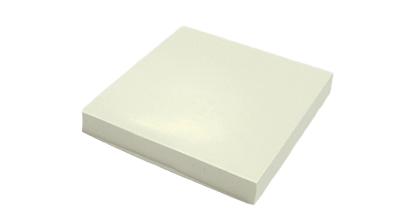What Is Thermal Rubber?

Thermal rubber is a material that promotes thermal conduction. Rubber is a material that does not conduct heat well, but it is used for cooling electronic devices as a material with enhanced thermal conductivity through the use of fillers and other compounding techniques.
Air gaps in contact surfaces reduce the efficiency of heat transfer, but thermal rubber fills these gaps and promotes heat conduction. The material’s flexibility allows it to absorb vibration, protecting electronic devices from vibration and improving reliability.
Thermal rubber is soft and, when combined with various components, it transfers heat from heat sources.
Uses of Thermal Rubbers
In recent years, the demand for miniaturization of electronic devices has increased the thermal load on such devices. Thermal rubber is an indispensable item in the thermal design of these electronic devices because of its high thermal conductivity and the ease of designing shapes that match the target components.
In addition to the above, its electrical insulation properties and good processability make it suitable for use in a wide variety of products, including automobiles as well as electronic equipment.
In electronic devices, they are used in electronic circuits such as transistors for power supplies, CPUs in PCs, and LSIs. In automobiles, it is used in power modules for the batteries, motors, and other drive systems in HEVs and EVs.
Principle of Thermal Rubbers
There are several types of thermal rubber, but the structure of the silicone type is introduced here.
The silicone type consists of a combination of thermally conductive silicone rubber with high hardness and thermally conductive silicone pads with low hardness. The higher hardness rubber is rigid and easy to handle, while the lower hardness rubber is characterized by good adhesion to the mounting surface.
In general, thermal rubber has excellent thermal conductivity as well as electrical insulation properties. Thermal rubber is highly flexible and adheres closely to devices such as heat sinks to dissipate heat efficiently from heat sources to the outside. Thermal design and thermal management are important for electronic devices, as excessive heat will prevent them from performing at their full potential. Thermal rubber plays an important role as a medium to dissipate heat from the heat source to the cooling area.
On the other hand, depending on the product, adhesion may deteriorate over time or due to external factors. Adhesion or fixation methods should be considered depending on the intended use.